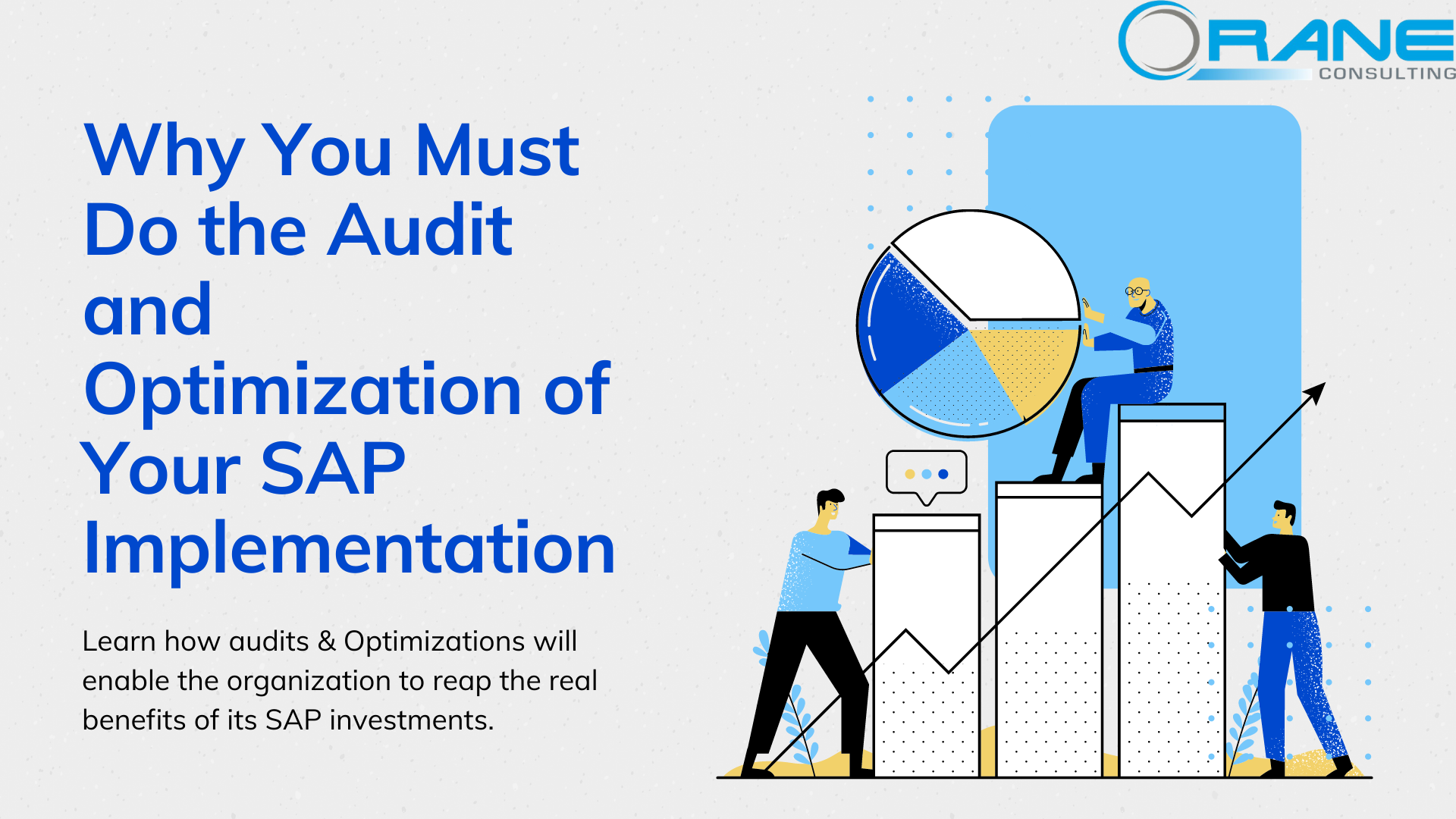Introduction:
When an organization implements SAP, it expects it to function seamlessly with every department. So, when there is an unexpected outage or security threat, there are also unexpected repercussions. According to IDC, unplanned downtimes could cost $500,000 to $1 million per hour to the organization. It also delays the daily operations of the organization, which leaves the customers disgruntled.
Most organizations assume that the work is done once the SAP is implemented. The truth is, SAP implementation has to be audited and optimized regularly to ensure the organization’s smooth functioning. SAP implementation audits help organizations to detect potential threats at an early stage and fix them proactively. It also helps in assessing the utilization level and system’s consistency to decide if an upgrade or re-implementation is required in the future.
Similarly, organizations must also focus on SAP optimization to enhance their capabilities at system and business function levels. Optimization and audits will enable the organization to reap the real benefits of its SAP investments. Let’s quickly look at how organizations can do SAP audits and optimization to unlock their full potential.
How Can Organizations Do SAP Audits and Optimization
SAP Audits
Process and application audit:
The primary objective of SAP implementation is to improve the efficiency of critical business processes. However, sometimes there could be gaps in implementation. For example, some SAP modules might not have been configured correctly, or the business processes may not have been aligned with the modules correctly. Sometimes multi-location implementations could also create roadblocks in successful system utilization. Process and application audits will help the organization to identify the gaps and fix them. They can also audit the current SAP processes and improve them to utilize the benefits of the SAP system fully. Regular audits and maintenance of SAP systems will help organizations to deliver better business outcomes consistently and grow.
Compliance audit
Compliance audits can be either internal or external. In internal compliance audits, organizations check if people follow the documented procedures correctly. In case of non-adherence, the organization must check if the people are not adhering to the procedure or if the documented procedures are outdated and need to be updated. In external compliance audits, organizations have to check if the procedures and data are compliant with the government and industry regulations and if they are safe within the system.
Security audit
Security is a critical component of the SAP system. A weak ERP implementation could be vulnerable to various types of threats ranging from data breaches, malware attacks, to even espionage. Hence, it’s essential to audit the security systems regularly. Organizations can begin by assessing user authorization and authentication. They can ensure only the relevant users have permission to access the data. They can even set permission controls, i.e., two members from the same team can be different permissions to access the data. Given that employees can now access the systems on mobile, ensure that the data cannot bypass the firewall. Organizations must be proactive in monitoring the threats and taking pre-emptive measures to maintain the SAP system’s security.
SAP Optimization
System optimization:
Organizations must plan each phase of the system – right from pre-implementation to go-live, operational, and stabilization. They must ensure that each of these phases is well-conceptualized and mapped correctly. Organizations need experts to leverage the full potential of SAP. Experts will be able to use their SAP experience to understand each vertical’s nuances, enhance the relevant features of the system, and eliminate the ones that are not relevant. Apart from that, organizations must also use real-time system monitoring tools to identify the SAP system issues early and prevent them before it escalates and poses a threat. Using features like granular reporting, predictive analytics, and smart notifications will allow organizations to reduce disruptions and ensure a quicker recovery.
Business process optimization
SAP’s business optimization implies that the manual processes must be automated to improve productivity. Accounting, warehouse, and quality management are a few of the several processes that need to be re-engineered and automated. Such automation not just delivers massive value for the organization but is also more cost-effective. Organizations also need to frequently check the SAP systems against SAP’s best practices to ensure that there are no bottlenecks in the systems and that they are optimized for optimum performance. Post automation, organizations must undergo comprehensive training on leveraging the SAP systems and other changes in the process and workflows. The recommendations should also be documented and standardized to ensure that the organization can handle the changes in the future.
Conclusion
SAP, if implemented correctly, can maximize the ROI for an organization. However, managing complex IT landscapes, different business processes, and an array of disparate tools can be overwhelming for the in-house teams. That’s why organizations often rely on experts to perform SAP implementation audits and optimization. Experts use proven frameworks and methodologies to identify potential bottlenecks and solve them to improve the organization’s efficiencies. They will ensure that the organization achieves its goals through SAP implementation.
We at Orane Consulting offer SAP audit and optimization services to organizations. Our audit services help in establishing a sustainable, secure, long-term, and automated environment for the SAP system within the organization. Our optimization services help to improve business processes and get the best out of the SAP system. Our solutions have helped our customers save money and improve their processes and systems. Take an agritech MNC, for example. The customer was unable to manage its procurement and manufacturing processes, or their MIS reports efficiently. We aligned the customer’s existing SAP processes against SAP best practices and initiated various reforms such as – master data accuracy, reviewing and bridging system and business process gaps, month-end reporting for correctness. We also provided 150 recommendations based on business impact and implementation to improve the business outcome. The customer could save over $500K through reduced exposure to payment-related risks and timely reconciliation of credit limits and outstanding payments.





